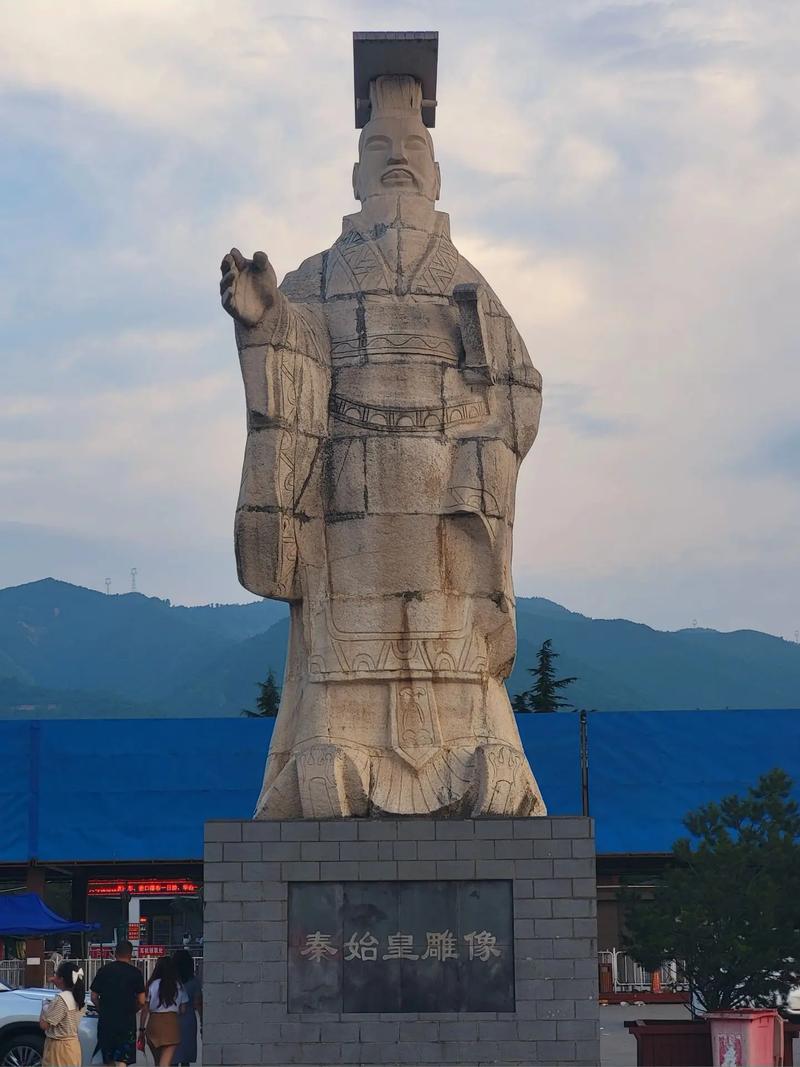
Where is the Statue of Qin Shi Huang?
The statue of Qin Shi Huang, the First Emperor, located prominently near Xi'an, holds immense historical and cultural significance. This imposing marble sculpture stands as a guardian in front of the museum adjacent to the Terracotta Warriors Museum, symbolically connecting the past to the present.
The Location and Setting of the Statue
The statue of Qin Shi Huang is located in Lintong District, Xi'an, Shaanxi Province, China. It stands majestically in front of the Qin Shi Huang Mausoleum Site Museum, a dedicated museum built to showcase the artifacts and history of the First Emperor's tomb complex. The museum is situated just east of the famed Terracotta Army Museum, making it an integral part of the larger historical site dedicated to the legacy of Qin Shi Huang.
The statue's strategic placement at the entrance to the museum is no coincidence. As visitors approach the museum, their eyes are immediately drawn to the commanding presence of the emperor, setting the stage for the historical journey they are about to embark on. The statue serves as a symbolic gateway between the present and the grandeur of Qin Shi Huang's reign.
The Statue's Appearance and Symbolism
The statue of Qin Shi Huang is a remarkable work of art, crafted from pristine white marble. It portrays the emperor in a regal and commanding posture, reflecting his status as the unifier of China. He stands tall and proud, adorned in elaborate imperial robes that exude power and authority.
Every detail of the statue's design is infused with symbolism:
- The emperor's upright posture and stern expression project an aura of strength, determination, and unwavering authority.
- His right hand is extended forward in a gesture of command, signifying his absolute rule and the unification he brought to the warring states of ancient China.
- In his left hand, he clutches a scroll, a representation of the laws and edicts he established, emphasizing his role as a lawgiver and administrator.
This masterful blend of artistry and symbolism ensures that the statue is not merely a representation of Qin Shi Huang's physical likeness but serves as a powerful embodiment of his legacy. It reminds us of his ambition, his political acumen, and his pivotal role in shaping Chinese history.
Visiting the Statue
Visiting the statue of Qin Shi Huang is an awe-inspiring experience that allows visitors to connect with China's rich history. The statue's grandeur, coupled with its historical significance, leaves a lasting impression on all who encounter it.
Here are some tips for planning your visit:
- Combine your visit to the statue with a trip to the adjacent Qin Shi Huang Mausoleum Site Museum and the nearby Terracotta Army Museum to gain a comprehensive understanding of the First Emperor's reign and legacy.
- Allow ample time to explore the area, as the historical site is vast and offers a wealth of fascinating artifacts and information.
- Consider hiring a tour guide to enhance your understanding of the historical context and significance of the statue and the surrounding sites.
The statue of Qin Shi Huang is more than just a monument; it is a testament to a pivotal period in Chinese history. A visit to this remarkable sculpture is an opportunity to reflect on the impact of Qin Shi Huang's rule, his unification of China, and the lasting legacy he left behind.
Questions and Answers
Q: Is the statue of Qin Shi Huang part of the Terracotta Army?
A: While located close by, the statue is not part of the Terracotta Army. It stands in front of the separate Qin Shi Huang Mausoleum Site Museum.
Q: Can I get close to the statue and take pictures?
A: Yes, visitors are welcome to approach the statue and take pictures. It's an impressive sight to see up close.
Q: Why is Qin Shi Huang considered such an important figure in Chinese history?
A: Qin Shi Huang is revered as the First Emperor of China. He unified the warring states, standardized weights and measures, and established a centralized system of governance that heavily influenced subsequent Chinese dynasties.
note: This return of all, without the author's permission, may not be reproduced